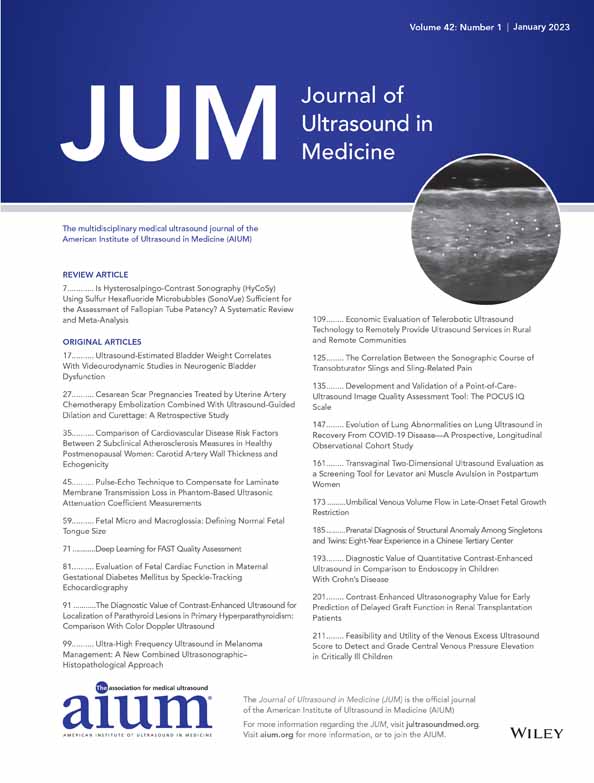Evaluation of Fetal Cardiac Function in Maternal Gestational Diabetes Mellitus by Speckle-Tracking Echocardiography
Abstract
Objectives
Gestational diabetes mellitus (GDM) is the most common metabolic disease that occurs during pregnancy and may result in fetal cardiac dysfunction. Our study aimed to assess the cardiac function in fetuses of mothers with GDM by a quantitative analysis software based on speckle-tracking echocardiography.
Methods
Forty-nine fetuses exposed to GDM and 50 normal fetuses were enrolled, and fetal echocardiography were performed and analyzed in this prospective cross-sectional study. We compared cardiac systolic function between the two groups using fetal cardiac quantitative analysis software.
Results
In the GDM group, left ventricular (24 ± 4 versus 28 ± 4, P < .001) and right ventricular global longitudinal strain (23 ± 4 versus 26 ± 4, P = .002) and right ventricular free wall strain (26 ± 6 versus 29 ± 5, P = .006) were significantly lower compared with the control group, whereas there was no significant difference in global spherical index (1.2 ± 0.1 versus 1.2 ± 0.1, P = .425). Additionally, 24-segment transverse fraction shortening of the right ventricle was more impaired than the left, and the segments with reduced fraction shortening were mainly located in the mid and apical sections of the right ventricle, and midsection of the left ventricle.
Conclusion
Fetuses exposed to GDM may have cardiac dysfunction before the onset of cardiac morphologic abnormalities, and the right ventricle is more vulnerable than the left during fetal development.




